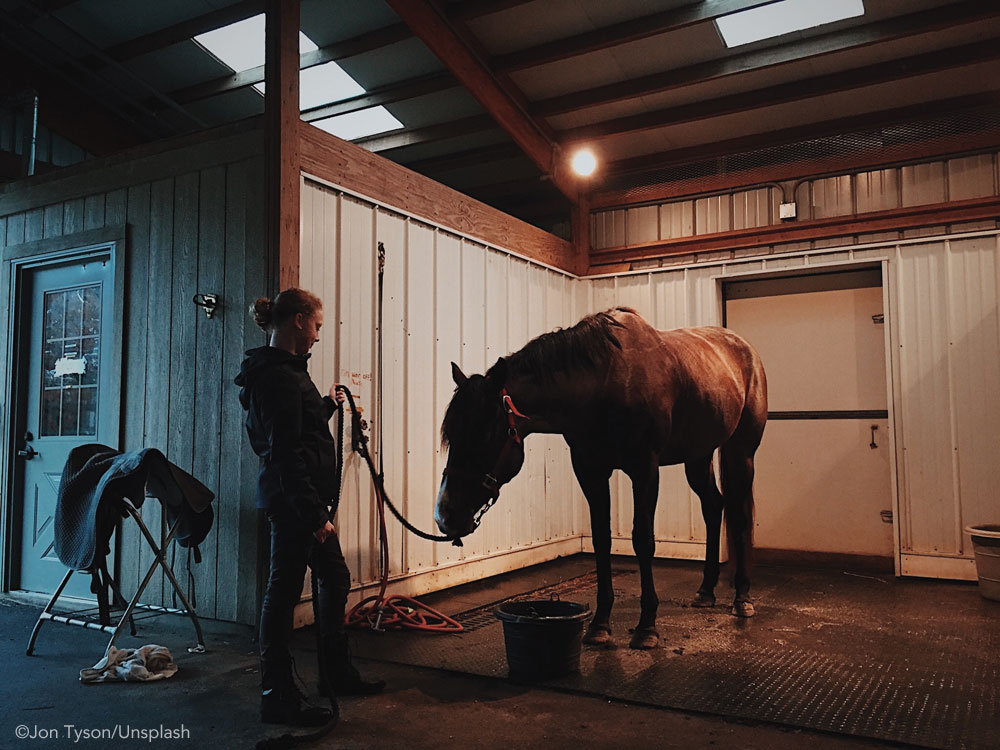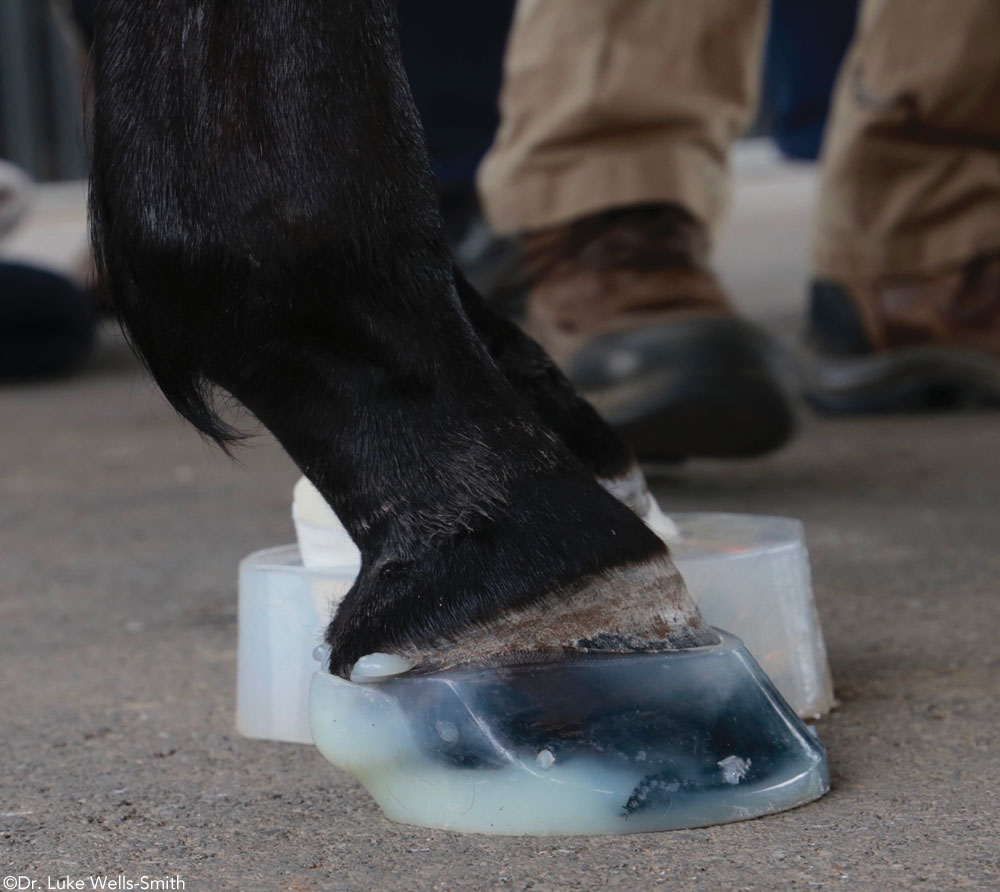In Part One of this article, we look at the causes and symptoms of laminitis and founder. Here, we’ll look at preventing and treating laminitis, and what to do in case of a laminitis emergency.
- If your horse is showing signs of developing laminitis, your vet and farrier can help you come up with a management plan to reduce the risk of founder.
- Sudden-onset laminitis is a serious emergency that needs to be treated by a veterinarian.
- Having a plan in case laminitis strikes can save your horse’s life.
What You Can Do for Laminitis
If your farrier sees changes, discuss what he or she recommends in shoeing or trimming. Call your veterinarian and make an appointment as soon as possible. Expect a possible set of radiographs and a blood test to measure hormones. The vet may use hoof testers to see how painful the feet are.
The horse’s weight and physical condition will be discussed; overweight horses will need more exercise, if possible, and less feed and treats. You may be able to prevent a more serious lameness if your veterinarian and farrier work together and you resolve to help your horse.
What Makes a Laminitis Emergency
In 2013, the Animal Health Foundation’s “Laminitis 911” program stressed that laminitis is an emergency to be treated with urgency
Serious laminitis may come on suddenly; you might come home one day and find your horse standing uncomfortably, as if nailed to the ground, refusing to walk no matter how hard you pull on the leadline. This is an emergency situation—call your veterinarian immediately and describe your horse’s behavior.
Your horse is telling you that something is wrong. If you run your hands around his hoof walls, one or more may be warmer. If you place your fingers at the back of the pastern, you may feel a bounding pulse there. These are the classic signs of laminitis. Tell the veterinarian if you feel warmth or pulses.

Waiting for the Vet
Gently move your horse to an area where your veterinarian can safely examine him. The horse should be in a stall or small pen. Bed the stall with deep shavings.
Listen carefully to your vet practice’s instructions over the phone. Ask if you should remove the horse’s hay; some medical tests are best performed without feeding. The clinic may instruct you to ice your horse’s feet; you will need to send someone to get bags of ice and immerse his feet in tall ice boots, buckets, or whatever you have handy.
If you can, take some photos of your horse. These will be useful later so you can see how heavy your horse was (or wasn’t) on the day of the attack, or how he was standing. You may also want to gather medical records, especially if the horse has had laminitis before.
Your veterinarian may want your farrier to pull your horse’s shoes or schedule a trim. It is important to evaluate your horse’s condition and level of pain.
Don’t expect many answers from your veterinarian until test results are back, radiographs are taken, and the horse’s history is reviewed. The veterinarian also needs to rule out other causes of lameness and factors in the horse’s recent exercise schedule.
What’s New in Treating Laminitis?
The Animal Health Foundation helped develop a simple new test that is used to measure a horse’s insulin called the oral sugar test. You’ll need to buy some Karo sugar syrup. Your vet may advise you to dose your horse with it before blood is drawn, so the blood’s sugar-reactive insulin can be measured. You will need to calculate your horse’s weight, figure out the proper amount, and use a syringe to dose your horse.

The farrier industry is always active in providing new shoes and boots that may help horses with laminitis. Formahoof is a new three-dimensional shoeing system that molds adhesive around the foot, and can be configured to different support goals. Debra Taylor, DVM, of Alabama’s Twin Creeks Podiatry finds that the molding helps laminitic horses grow much-needed sole depth.
Ice boots, vibration plates and slow-feed hay nets are part of a growing product sector for owners of laminitic horses. The Soft-Ride boot line makes cushioned boots, as well as wader-type plastic boots and high-tech icing sleeves.
Most of the news about laminitis is about preventing it, and also in finding new medications to help control pain.
“Horse owners now have the tools to be able to make laminitis a preventable disease,” says Walsh.
Owners can find peace of mind by getting annual assessments of horses’ foot health and hormone levels, keeping horses fit, and being ready when and if laminitis strikes. Your horse hopes you never need to make a laminitis emergency vet call.
This article originally appeared in the April 2019 issue of Horse Illustrated magazine. Click here to subscribe!





